Top Rankings
Forest Park SD 91 School District ranks among the top 20% of public school district in Illinois for:
Category
Attribute
Diversity
Most diverse schools (Top 1%)
Student Attention
Lowest student:teacher ratio (Top 1%)
For the 2025 school year, there is 1 public middle school serving 184 students in Forest Park SD 91 School District. This district's average middle testing ranking is 1/10, which is in the bottom 50% of public middle schools in Illinois.
Public Middle School in Forest Park SD 91 School District have an average math proficiency score of 5% (versus the Illinois public middle school average of 24%), and reading proficiency score of 17% (versus the 29% statewide average).
Minority enrollment is 84% of the student body (majority Black), which is more than the Illinois public middle school average of 61% (majority Hispanic).
Overview
This School District
This State (IL)
# Schools
5 Schools
1,600 Schools
# Students
790 Students
621,275 Students
# Teachers
74 Teachers
47,956 Teachers
Student : Teacher Ratio
11:1
11:1
District Rank
Forest Park SD 91 School District, which is ranked within the bottom 50% of all 844 school districts in Illinois (based off of combined math and reading proficiency testing data) for the 2020-2021 school year.
Overall District Rank
#540 out of 852 school districts
(Bottom 50%)
(Bottom 50%)
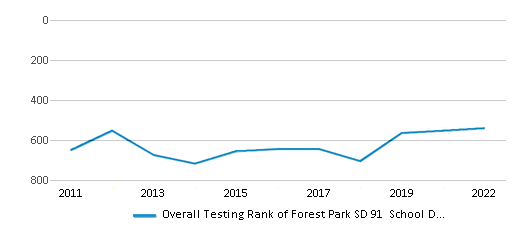
Math Test Scores (% Proficient)
(20-21)14%
28%
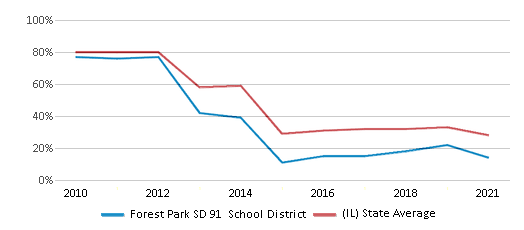
Reading/Language Arts Test Scores (% Proficient)
29%
30%

Science Test Scores (% Proficient)
45-49%
50%
Students by Ethnicity:
Diversity Score
0.70
0.71
# American Indian Students
1 Student
1,364 Students
% American Indian Students
n/a
n/a
# Asian Students
14 Students
32,125 Students
% Asian Students
2%
5%
# Hispanic Students
201 Students
185,771 Students
% Hispanic Students
25%
30%
# Black Students
338 Students
133,271 Students
% Black Students
43%
22%
# White Students
177 Students
244,693 Students
% White Students
22%
39%
# Hawaiian Students
n/a
608 Students
% Hawaiian Students
n/a
n/a
# Two or more races Students
59 Students
23,281 Students
% of Two or more races Students
8%
4%
Students by Grade:
# Students in PK Grade:
83
19,756
# Students in K Grade:
84
27,178
# Students in 1st Grade:
86
28,250
# Students in 2nd Grade:
73
29,179
# Students in 3rd Grade:
96
29,629
# Students in 4th Grade:
100
30,553
# Students in 5th Grade:
83
38,342
# Students in 6th Grade:
62
109,327
# Students in 7th Grade:
65
135,557
# Students in 8th Grade:
58
137,502
# Students in 9th Grade:
-
9,488
# Students in 10th Grade:
-
9,079
# Students in 11th Grade:
-
8,909
# Students in 12th Grade:
-
8,526
# Ungraded Students:
-
-
District Revenue and Spending
The revenue/student of $33,241 is higher than the state median of $21,990. The school district revenue/student has declined by 14% over four school years.
The school district's spending/student of $29,965 is higher than the state median of $21,244. The school district spending/student has declined by 14% over four school years.
Total Revenue
$26 MM
$41,381 MM
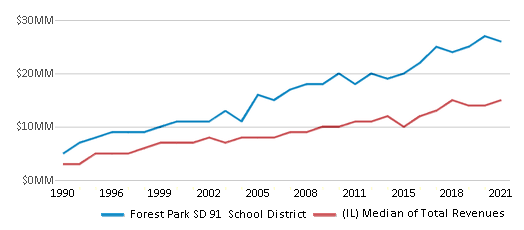
Spending
$24 MM
$39,976 MM
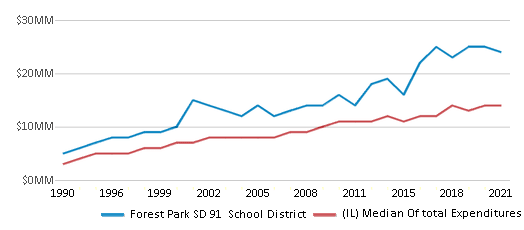
Revenue / Student
$33,241
$21,990

Spending / Student
$29,965
$21,244
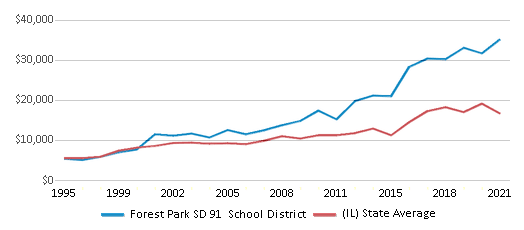
Best Forest Park SD 91 School District Public Middle Schools (2025)
School
(Math and Reading Proficiency)
(Math and Reading Proficiency)
Location
Grades
Students
Rank: #11.
Forest Park Middle School
Rank:
2/
Bottom 50%10
925 Beloit Ave
Forest Park, IL 60130
(708) 366-5742
Forest Park, IL 60130
(708) 366-5742
Grades: 6-8
| 184 students
Recent Articles

Year-Round Or Traditional Schedule?
Which is more appropriate for your child? A year-round attendance schedule or traditional schedule? We look at the pros and cons.

Why You Should Encourage Your Child to Join a Sports Team
Participating in team sports has a great many benefits for children, there is no doubt. In this article you will learn what those benefits are.

White Students are Now the Minority in U.S. 九游体育s
Increasing birth rates among immigrant families from Asia and Central and South America, combined with lower birth rates among white families, means that for the first time in history, public school students in the United States are majority-minority. This shift in demographics poses difficulties for schools as they work to accommodate children of varying language abilities and socio-economic backgrounds.





